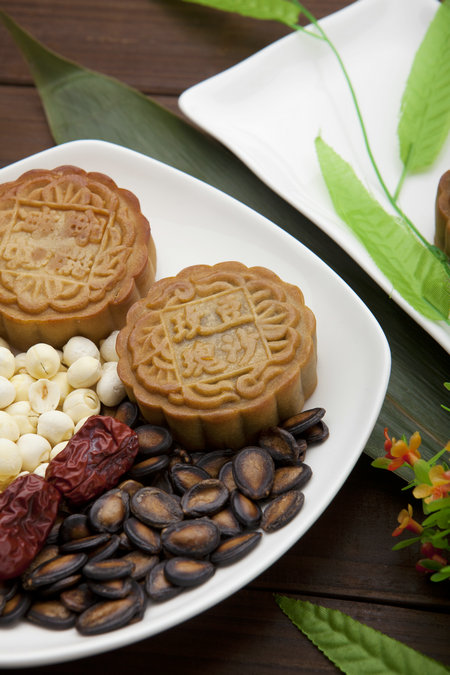 |
|
The mooncake resembles the shape of a full moon, and it is also regarded as a symbol of family reunion and good luck. TIAN JINGLI/FOR CHINA DAILY |
Origin and evolution
There are several popular theories about the festival's origin. Some historians and experts believe that the early iteration of the holiday was related to the ancient custom of moon worship, which goes back over 3,000 years.
Ancient Chinese emperors worshipped the harvest moon in autumn to wish for a plentiful harvest the following year. The custom was adopted by the masses and became popular over time.
The term "Mid-Autumn" first appeared in Rites of Zhou, a classic almanac written during the Warring States Period (475-221 BC), although, it was only a reference to the time of the season.
In the early Tang Dynasty (618-907), worshipping the moon was popular among the upper class, a practice which, later in the dynasty, became more widespread among the populace and was no longer just the preserve of just the rich merchants and officials.
In the Song Dynasty (960-1279), the 15th day of the eighth lunar month was established as the "Mid-Autumn Festival", and offering up sacrifices to the moon became part of the festival's ritual.
During the Ming and the Qing dynasties (1368-1911), the Mid-Autumn Festival grew to be as popular as Chinese New Year, with many different activities celebrating the holiday, such as burning pagodas and performing the fire dragon dance.
There are also many legends and poems related to the occasion that have been produced and passed down through the generations.
For example, the poem Prelude to Water Melody by famous Song Dynasty poet and statesman, Su Shi, written to his brother after a particularly joyous Mid-Autumn spent drinking together, is among the mostly widely known by Chinese people.
"May we all be blessed with longevity, though thousands of miles apart, we are still able to share the beauty of the moon together," wrote Su.